At this point, most of us are painfully aware of the restrictions that COVID-19 social distancing protocols have put on our daily lives. Anyone who can is working from home, major events are canceled, non-essential businesses are closed, and travel is either strongly discouraged or prohibited outright. In particularly hard hit areas, life and commerce has nearly ground to a halt with no clear end date in sight.
Naturally, there are far reaching consequences for this shutdown beyond what’s happening on the individual level. Large scale projects are also being slowed or halted entirely, as there’s only so much you can do remotely. That’s especially true when the assembly of hardware is concerned, which has put some industries in a particularly tight spot. One sector that’s really feeling the strain is aerospace. Around the world, space agencies are finding that their best laid plans are suddenly falling apart in the face of COVID-19.
In some cases it’s a minor annoyance, requiring nothing more than some tweaks to procedures. But when the movements of the planets are concerned, a delay of weeks or months changes everything. While things are still changing too rapidly to make an exhaustive list, we already know of a few missions that are being impacted in these uncertain times.
Mars Rover Misses its Flight
Certainly the mission hit hardest at this point is the Rosalind Franklin rover, a joint mission from the European Space Agency (ESA) and Roscosmos. Europe’s first Mars rover, the six-wheeled vehicle was scheduled to touch down on the Red Planet in March 2021 to search for signs of past life. It might seem like that gives teams plenty of time to address any issues, but the orbital mechanics of interplanetary flight make the departure time absolutely critical.
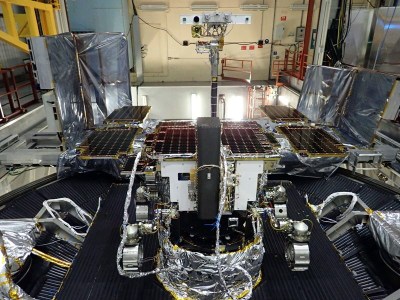
Put simply, Mars makes its closest approach to Earth every two years. While you could technically send a craft to Mars at any time, launches made during this biennial window are the most efficient by far. When Mars is farther away, it obviously takes more energy to put the spacecraft on an intercept trajectory. Depending on the mass of the spacecraft and the launch vehicles available, that may or may not be possible. In any event, the Rosalind Franklin and its launcher were designed to leave Earth during this window, and any deviation outside of it simply can’t be tolerated.
The ESA and Roscosmos teams were reportedly very close to having Rosalind Franklin completed before this window opens in July 2020, but concerns over the parachute deployment system required more testing. Under normal circumstances they likely could have got the issue addressed on time, but due to international travel limitations, it was determined that performing the tests was simply too burdensome. Rather than let the rover launch with a potentially defective parachute, the team has decided to delay until the next available launch window in 2022.
While a push to 2022 is certainly disappointing for everyone involved, it should be said that this isn’t the first time the mission has missed its window. It was originally slated to launch in 2018, but was held back due to issues with the rover’s scientific payloads.
James Webb Testing Put On Hold
NASA’s response to COVID-19 means that work on Hubble’s eventual successor, the James Webb Space Telescope (JSWT), is being stopped indefinitely. This infrared observatory’s 6.5 meter (21.3 feet) diameter gold and beryllium primary mirror promises to give humanity the best look yet at objects that are too old and too distant for traditional optical telescopes to observe.
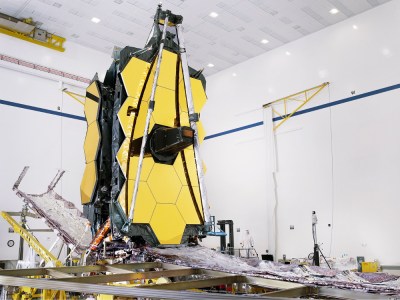
The technical complexity of packing such a massive mirror into the payload fairing of the launch vehicle, among a myriad of other issues, has caused development of the JWST to go significantly over budget and behind schedule. NASA started development of the telescope in 1996 and hoped to have it launched by 2007, but a redesign of the spacecraft in 2005 set the program back over a decade.
At this point, primary construction of the JWST is actually complete. But given the massive investment of time and money put into the observatory, it’s currently being put through a grueling test program in California by prime contractor Northrop Grumman. This labor intensive process simply can’t be done remotely, and given the severity of the outbreak in the state, NASA has decided there’s no way to proceed without putting staff at risk.
The James Webb Space Telescope will remain in its cavernous environmentally controlled clean room on the Northrop Grumman campus, with round-the-clock security in place to prevent any possible tampering with the 10+ billion dollar spacecraft. It’s unclear how this stoppage will impact the overall mission timeline, but it’s safe to assume that the planned March 2021 launch date will end up being pushed back again.
SLS Production Shutdown
Another large NASA project being put on hold for the time being is the Space Launch System (SLS). The space agency claims this Space-Shuttle-derived rocket is essential for their plans beyond low Earth orbit, but critics say the single-use booster is too expensive in an era of reusable rockets. The SLS is an key element NASA’s Artemis lunar program, but beyond that, it’s currently unclear what missions would require the “super heavy-lift” rated booster.
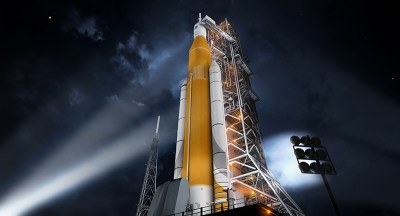
Production of the first flight-ready SLS has been shut down since March 20th, when NASA Administrator Jim Bridenstine moved both the Michoud Assembly Facility and Stennis Space Center to their maximum emergency response levels. This means all work is suspended, and personnel are only allowed on-site if their presence is necessary to protect critical infrastructure or human life.
Like with the JWST, it’s difficult to say how this will impact the already behind schedule project. Officially no delay has been announced for the first Artemis mission, but it’s difficult to imagine the booster and Orion spacecraft will be ready if teams aren’t able to work on the hardware for several weeks or more.
Commercial Space Woes
Agencies like NASA, the ESA, and Roscosmos have the backing of their respective governments to rely on, so ultimately delays and stop work orders are little more than an inconvenience. It’s not as if NASA is worried about turning a profit, or in danger of running out of money before the pandemic clears up. When the situation improves, personnel will come back and work can continue again.

But the same can’t be said for some of the “New Space” companies. OneWeb, a start-up based out of London that was building its own satellite mega-constellation to challenge SpaceX’s Starlink program, has already declared bankruptcy.
While it was no secret that the company was in trouble financially before this, a statement released by the company claims they were unable to secure additional funding due to “the financial impact and market turbulence related to the spread of COVID-19”. The company had just launched another 34 satellites less than a week before the bankruptcy announcement and subsequent layoffs, bringing their total up to 74.
In the United States, expandable space habitat developer Bigelow Aerospace laid off their entire workforce on March 23rd. The official line is that this was done voluntarily in response to an order from Nevada’s Governor that all non-essential businesses must close, and that the plan is to rehire workers once the crisis has passed. But rumor has it the company may be using the shutdown order as an excuse to shutter permanently.
2020 Rover and ISS Unaffected
It’s not all bad news, though. NASA’s next Mars rover, the recently dubbed Perseverance, is still on schedule to launch this summer. As with the Rosalind Franklin, any delay in the launch would push the mission back by two years, but at this point there are no issues being worked that would prevent the launch from continuing as scheduled. In fact, the mission is of a high enough priority that NASA says it will go ahead even if the emergency response level isn’t lowered.
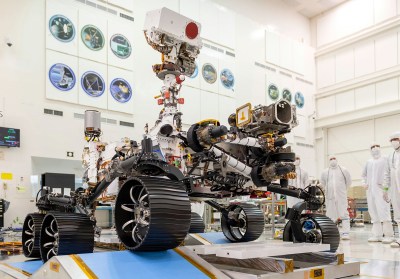
The only thing that has a higher priority than Perseverance right now is the International Space Station and the astronauts aboard it. No matter what happens on the ground, it’s life as usual for those living in low Earth orbit. Ground Control will continue to be available 24 hours a day, and regular resupply missions and crew rotation flights are not to be impacted. Though even if flights to the Station are put on hold, the crew have ample supplies to remain onboard for the foreseeable future.
Even under normal conditions, astronauts are held in quarantine for weeks before their flight to the Station and all materials are carefully sterilized prior to launch. Unsurprisingly, illness in space is something that NASA and its international partners have always been careful to avoid. Even if NASA wasn’t already running at a heightened emergency preparedness level, COVID-19 would have never made it to orbit.
All Dates Subject to Change
Of course, everything goes according to plan…until the moment it doesn’t. Outside of the International Space Station and the human lives aboard it, pretty much everything is expendable. NASA isn’t going to risk the lives of their personnel just to avoid waiting two more years to launch Perseverance, so if the local situation gets markedly worse in Florida, even a high priority mission could get put on the back burner. Local news is already reporting that at least one staff member at Kennedy Space Center has tested positive for COVID-19.

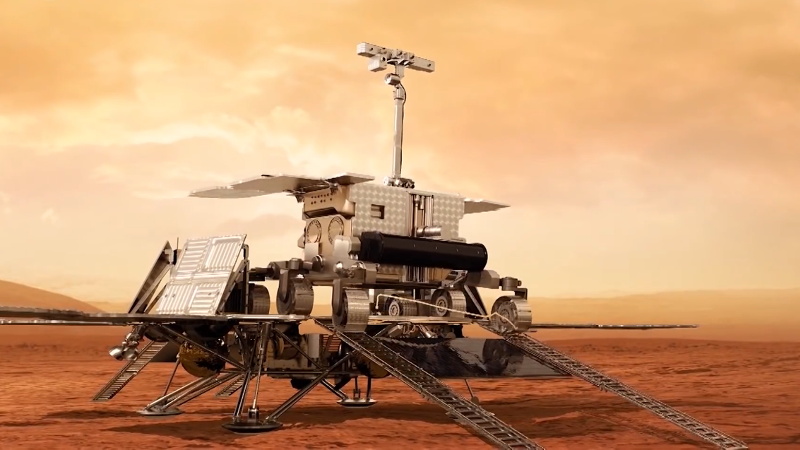















NASA: “Let’s launch some satellites”
2020: “You will not go to space today”
NASA: “Today!? We’re NASA, we probably wouldn’t launched the damned thing for 18 months anyway/”
Remember when Iridium weent bankrupt and their satellite constellation was sold off super cheap?
Maybe there will be a similar fire sale on the One Web constellation. Anybody have a few million to spare?